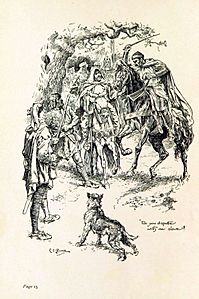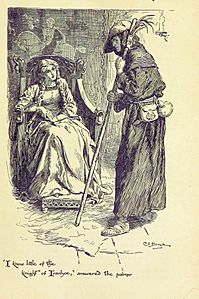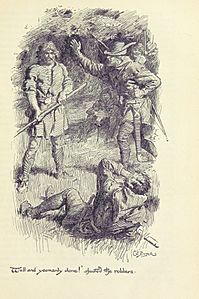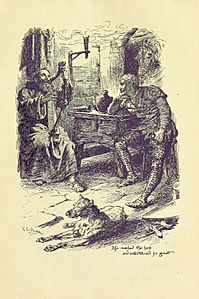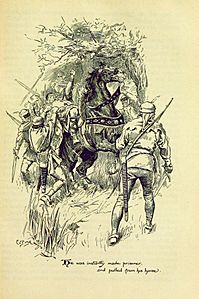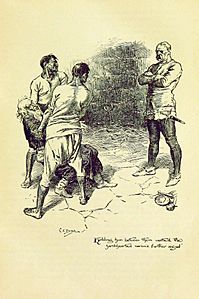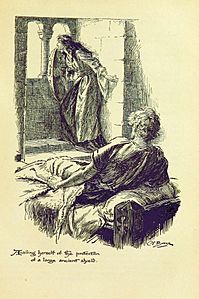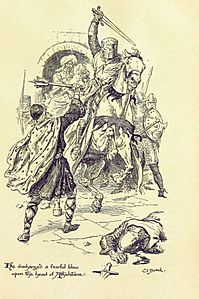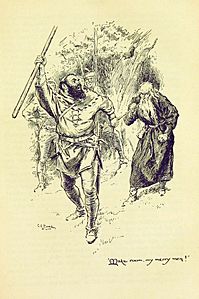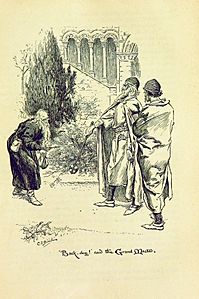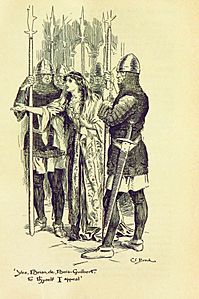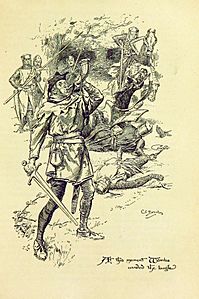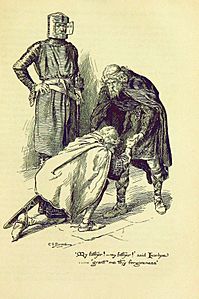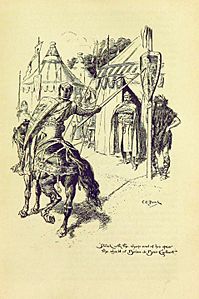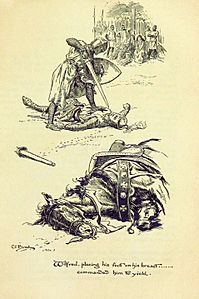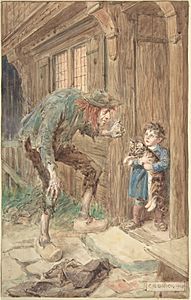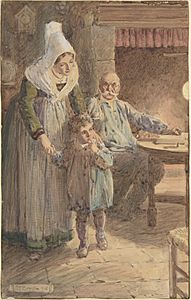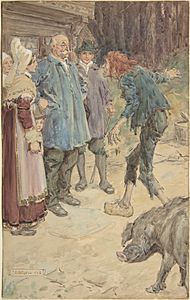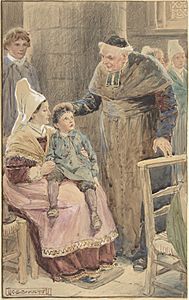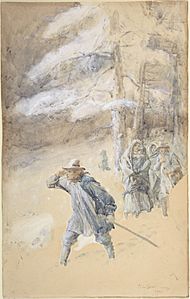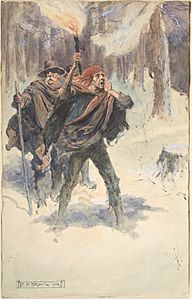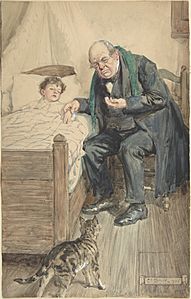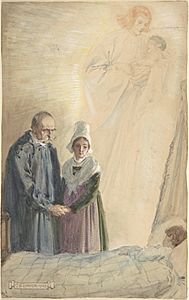C. E. Brock facts for kids
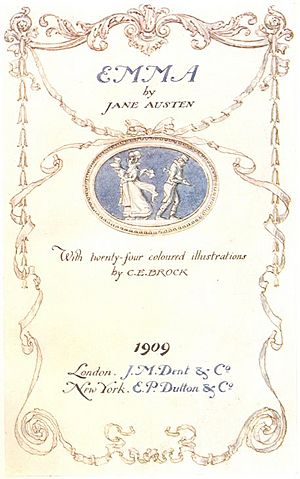
Charles Edmund Brock (born February 5, 1870 – died February 28, 1938) was a famous English artist. He was a painter, a line artist, and a book illustrator. He signed most of his work as C. E. Brock. Charles was the oldest of four brothers who were all artists. His brother Henry Matthew Brock was also a well-known illustrator.
Contents
Early Life and Art Training
Charles Edmund Brock was born in Holloway, London, on February 5, 1870. His family later moved to Cambridge. He briefly studied art with a sculptor named Henry Wiles.
A Case of Mistaken Identity
There was some confusion because two different artists were named Charles Edmund Brock. The Charles Edmund Brock from Cambridge (our artist) was sometimes mixed up with another Charles Edmund Brock from London. The London artist was a portrait painter who drew members of the Royal Family.
The mix-up was so big that they even paid each other's bills by mistake! To fix this, they agreed on a plan. Charles Edmund of Cambridge would stop using "Edmund." Charles Edmund of London would stop using "Charles." This helped people tell their work apart.
C. E. Brock's Artistic Career
Brock got his first job illustrating a book when he was 20 years old, in 1890. He became very successful. He illustrated books for many famous writers. These included Jonathan Swift, William Thackeray, Jane Austen, Charles Dickens, and George Eliot.
Brock also drew pictures for magazines like The Quiver, The Strand, and Pearsons. He often used the libraries at Cambridge University to find ideas for his pictures. He was known for his detailed line drawings. He was also very good at using colors in his art. People praised his paintings for looking real and full of life. Only a few of his paintings have been found, which makes them very valuable.
The Brock Brothers' Studio
Charles and his brothers had an art studio in Cambridge. It was full of interesting old items, furniture, and a collection of costumes. They had many old fashion prints from the Regency era (early 1800s). They even had special clothes made to use as examples for their drawings. Family members would often pose for each other in these costumes.
Famous Golf Paintings
The most famous and valuable paintings by Brock are his golf pictures. These are The Bunker, The Drive, and The Putt. He painted all three in 1894 as a series. In 1991, a collector from Japan bought all three paintings for $1.5 million.
The Putt is the most valuable of these. Brock actually repainted it. The person who ordered the painting wanted to be more visible in the picture. The first version of The Putt is thought to be even better. It is used on postcards and posters in many golf museums.
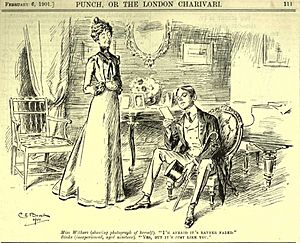
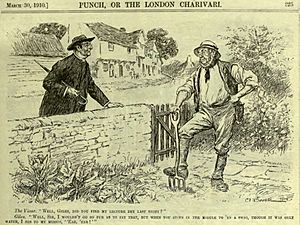
Brock's Work for Punch Magazine
Brock drew 109 illustrations for Punch magazine. His first drawing appeared on February 6, 1901. His last one was on March 30, 1910. After 1905, he drew fewer pictures for Punch. He stopped working for the magazine completely after 1910.
Brock continued to illustrate books and paint portraits. Some of his portraits from the 1920s are in national art collections. He kept illustrating books until he died. One of his last illustrated books was Pamela: A Story for Girls (1938). Other artists finished books he was working on when he passed away.
Brock's Artistic Style
C. E. Brock changed his drawing style depending on the story he was illustrating. For some stories, his work was very delicate and detailed. It fit the polite, gentle style of early Victorian novels. For other stories, his art was lively and showed strong, energetic characters. These included soldiers, country folk, and people who loved horses. He also drew funny, exaggerated pictures to entertain children in storybooks.
Examples of Book Illustrations
Here are some examples of how C. E. Brock illustrated entire books.
Illustrating an Adventure Novel
In 1897, Brock illustrated a new edition of Sir Walter Scott's adventure novel, Ivanhoe. This new book had 16 full-page illustrations. Publishers often added new illustrations to older books to make them exciting for new readers. The pictures for Ivanhoe likely benefited from the props the Brock brothers kept in their studio. These props included examples of old weapons and clothing.
Illustrating a Children's Book
Lucas Malet was the pen name of Mary St Leger Kingsley. She was a Victorian novelist who mostly wrote for adults. But she also wrote some children's stories. In 1887, her short book Little Peter: A Christmas Morality for Children of any Age was published. It had nine full-page illustrations by Paul Hardy. The story was popular and reprinted many times.
In 1909, a new edition of Little Peter came out. This time, it had eight full-page color illustrations by Charles Brock. By then, it was much cheaper to print books in color. This was great news for artists like Brock, as it meant more chances to sell their colorful work. The illustrations below show the story's main parts.
Images for kids


